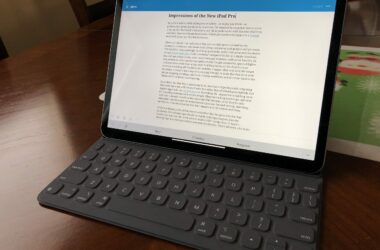It took some 30 months, but I’m finally also giving up on my MacBook Pro.
Of course, I’m hardly the first to come to this conclusion. This latest design has been roasted in the beginning for its useless Touch Bar and removal of a hardware Esc key and substantially inferior battery life, but the complaints really started flying once reports of an unreliable keyboard became commonplace, so much so that 2 years later Apple has had to issue a mea culpa on the problem and extend its warranties specifically for the fragile design; I had to take my laptop back to the Apple Store for repairs twice in 2 years for this problem. A couple weeks ago, the laptop started exhibiting another issue—an unreliable cable that’s bonded to the display—that Apple has not yet admitted to and thus would cost at least $500 to repair.
For the record, my 2011 17″ MacBook Pro still runs fine and has only needed one repair in its lifetime, a known GPU issue that Apple eventually admitted and paid to fix.
Like most Apple customers disillusioned by this generation of MacBook Pros, I considered switching to a Windows laptop1. To Microsoft’s credit, they have upped the game on both Windows hardware (via the Surface line) and software (via continuous and interesting Windows updates) in recent years, and the overall user experience of the operating system is mostly on par with Macs and MacOS. Hell, I was sorely tempted to make the trade only 10 months ago.
I ended up with replacing my MacBook Pro clunker with an iMac.
As I lamented in the past, MacOS can still lean on a soft lock-in via its software ecosystem. In some cases it’s enabled by Apple’s iOS <-> Mac connection, but even there Microsoft has done a great job of executing its current strategy of making its software available on all platforms. With desktop computing, web apps have become the de facto platform, and while Windows will have to support its legacy desktop APIs and tech stacks2, they are encouraging the use of web technologies for the OS and rewriting parts of the traditional Office suite in a similar vein. For the rest, Electron-powered apps and Progressive Web Apps make up a substantial chunk of modern Windows applications.
To be fair, web apps—wrapped or otherwise—also make up a lot of the MacOS app ecosystem. The difference, though, is that MacOS (and OSX, before the rebranding) has traditionally had a community of indie app developers who have and are continuing to build for the OS, in native Objective C and/or Swift, with an eye towards great aesthetics and fantastic user experiences. Tweetbot (Twitter client), Reeder (RSS Reader), Fantastical (Calendar), Things (to-do list), Airmail (email client) — there are plenty of web-based equivalents that feature the same set of functionality3, but few that can provide the same end-user experience polish.
The MacOS app ecosystem is also showing that the endgame for desktop apps is paying for software, via subscription or a modest one-time purchase4. While there are certainly a variety of business models possible with software—Software as a Service (SaaS); ad-supported; as a value-add to a customer bundle (e.g., Amazon Prime); to sell hardware; as a loss-leader to other profitable services—desktop apps have retreated to this singular method of monetization: the simple sale.
The lack of monetization options is largely due to the combination of the lack of reach of the desktop as a platform for apps coupled with the overall quality and complexity expected out of these apps, particularly on the Mac. The mobile ecosystem dwarfs any amount of users and usage on laptops and desktops, so most business models which benefit from scale will primarily focus on phones. Utility and productivity software better fit for keyboards and mice still benefit from being on as many platforms as possible, hence Electron and web apps that can span Windows, Macs and Linux workstations along with web browsers.
It leaves the space of quality Mac desktop software as a niche of an already niche corner of computing devices. Since the expected sales are so low anyway, indie app devs have concluded that they might as well just charge money; at least the accounting is easy. Even then, the number of copies sold is so low that the teams behind these apps can’t afford to hire huge teams of developers, which in turn affects how feature-rich these apps can be and their pace of evolution.
The upcoming Catalyst initiative—to cross-build iOS and MacOS apps—may very well close the book on native desktop app development. It’s still native code, but the UI paradigms are different enough between phones and PCs that much of the uniqueness of the Mac interface gets lost in translation5. And even if indie devs continue to invest in each platform separately, they’ll still face added competition from formerly iOS-only apps, which will be just good enough to entice some users, and likely drive down app prices, which in turn makes those businesses unviable.
A requiem, then.
I didn’t seriously think about Linux nor Chromebooks as possibilities, when the vast majority of PC desktop and web software assume a Windows or Mac OS.↩
They still let you tap the Win32 API directly if you really need that functionality!↩
In fact, Gmail is so complicated and UI/feature-rich that there is a subindustry of email clients that just wrap around the Gmail web interface and layer a couple of additional features on top.↩
Modest, at least compared to the rock-bottom pricing that plagues mobile app stores.↩
The new Reeder 4 app unified its iOS and Mac codebases, and while the app is still extremely beautiful and functional, there are concessions on the edges made on the desktop to accommodate its mobile cousin.↩




